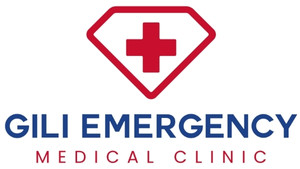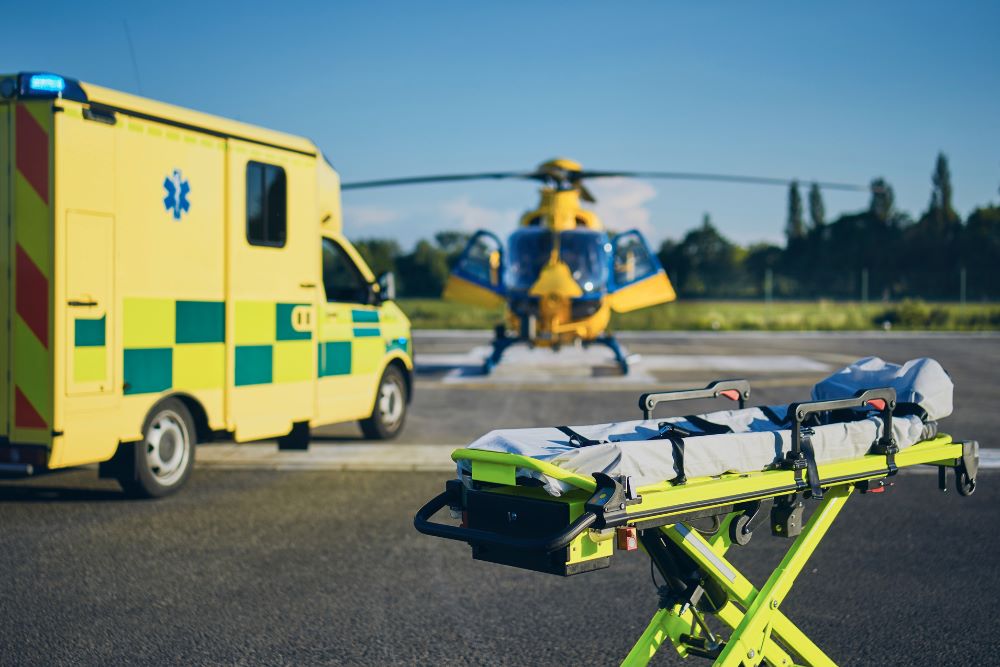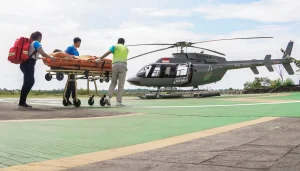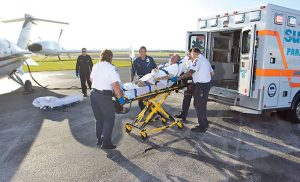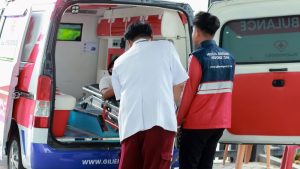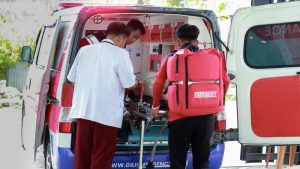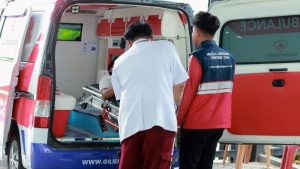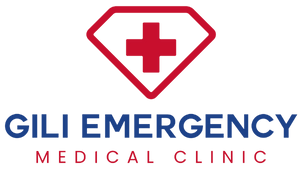You know that ultimate island vibe — you, a hammock, a fresh coconut in hand, and the ocean doing its chill thing right in front of you. Pure paradise. But then — bam — something goes sideways. Maybe a dive goes wrong, your stomach flips out, or an allergic reaction hits outta nowhere. Total mood killer, right? That’s when Gili Air medevac steps in like a real-life hero.
This article will walk you through everything about emergency medical evacuation in Gili Air—how it works, who’s involved, and why the ambulance Gili, Gili medical clinic, and Gili doctor are your best friends in a crisis. No boring jargon—just straight talk that could save a life.
Why Did I Choose to Write About Gili Air Medevac?
Honestly? Because nobody talks about it until they need it. I once met a traveler—let’s call him Jack—who got decompression sickness after a deep dive. Within an hour, he was on a medevac boat heading to Lombok. Later, when I asked how he felt, he just said, “Man, I owe those people my life.”
That moment hit different. We all come to Gili Air for the sunshine, sea turtles, and smoothie life — but the real game-changer? Having a solid Gili Air medevac system that’s got your back when things go sideways. It’s what makes this island not just drop-dead gorgeous, but actually safe too. So yeah, let’s break it down — like how you’d spill the tea to a friend over iced coffee.
What Does “Medevac” Mean in This Context?
Basically, medevac (aka medical evacuation) is your fast-pass outta trouble when local care just won’t cut it. Think of it as a VIP rescue mission — part ambulance Gili, part speedboat, and sometimes even a freaking helicopter — all working together between the Gili medical clinic, Gili doctor, and big hospitals over in Lombok or Bali.
When seconds matter, this chain of communication and quick action becomes pure gold.
When Is Gili Air Medevac Needed?
You don’t hit the medevac button for a stubbed toe. But if it’s serious, you’ll want that call made ASAP. Here’s when Gili Air medevac might be your lifeline:
- Decompression sickness (a diver’s worst nightmare)
- Suspected heart attack or stroke
- Severe allergic reaction (think anaphylaxis)
- Serious trauma or broken bones
- Pregnancy complications
- Major infections or high fever not responding to treatment
Once a Gili doctor decides local care won’t cut it, the Gili medical clinic immediately sets the medevac process in motion.
Who Operates Medevac on Gili Air?
1. Gili Medical Clinic
This is your first stop when things go sideways. The Gili medical clinic’s got local legends — doctors and nurses who know every shortcut on the island. They’ll patch you up, hook you to oxygen or IVs, drop the right meds, and hit up mainland hospitals if things get serious. It’s like your medical basecamp on paradise.
2. Gili Doctor
There’s usually a resident Gili doctor or an on-call physician rotating between the Gilis. This is the person who decides if evacuation is necessary. They communicate directly with receiving hospitals, prepare the paperwork, and often ride along or stay in touch during transport.
3. Ambulance Gili & Transport Teams
When people say ambulance Gili, they mean the full island rescue setup—from the stretcher that carries you to the dock, to the boat or land ambulance that takes you to the hospital. It’s not your typical city siren scenario—it’s fast, efficient island-style teamwork that bridges land and sea.
4. Mainland Hospitals
Once the patient reaches Lombok or Bali, hospital specialists take over. The medevac team doesn’t just drop you off—they hand you over with all your vitals and medical info ready to roll.
How the Medevac Process Unfolds
Let’s walk through what actually happens, step by step. Picture this: you’re out diving, and your buddy suddenly complains about dizziness and tingling fingers.
- Rushed to the Gili medical clinic. Staff assess vitals, give oxygen, and call the Gili doctor.
- Doctor’s evaluation. They suspect decompression sickness—no time to waste.
- Medevac call-out. The clinic alerts emergency services for ambulance Gili and a fast boat.
- Patient prep. Oxygen, IV fluids, and stabilization before transfer.
- Transport phase. Ambulance Gili takes the patient to the pier, where a speedboat waits.
- Lombok handoff. Onshore, another ambulance races to the hospital.
- Hospital arrival. The patient is received by emergency specialists—sometimes flown onward to Bali.
All of this can happen in under 90 minutes if the sea’s calm. Not bad for a tiny island in the middle of paradise, right?
Challenges and Solutions in Gili Air Medevac
1. The Sea Doesn’t Always Cooperate
Stormy waves and bad weather can delay transfers. When that happens, the Gili doctor coordinates with helicopter or air rescue options if available. Quick thinking and communication are key.
2. Limited Local Facilities
The Gili medical clinic is great for stabilization but not surgery. That’s why Gili Air medevac exists—to bridge the gap fast. Regular drills keep everyone sharp.
3. Communication Gaps
Signal can drop mid-transfer. To fix that, clinics and ambulance Gili teams now use satellite phones and radios to stay connected even when the signal disappears.
4. Cost and Insurance Issues
Here’s the not-so-fun part: medevac is pricey. Without proper travel insurance, you could be staring at a huge bill. That’s why every diver and traveler should double-check that their policy includes Gili Air medevac coverage.
Why “Ambulance Gili” Matters
The ambulance Gili isn’t just a van—it’s the island’s first lifeline. Imagine needing medical help and seeing that white vehicle with the red cross waiting for you on the shore. It’s hope in motion.
The crew knows every twist of the island’s paths and how to handle patients even on a bumpy beach ride. For many emergencies, ambulance Gili is the first link in a chain that literally saves lives.
Real-World Anecdote: The Diver’s Close Call
Remember Jack, the diver I mentioned earlier? After surfacing too fast, he couldn’t move his legs. Within minutes, his friends carried him to Gili medical clinic, where the Gili doctor started oxygen therapy.
The medevac kicked in—ambulance Gili to the dock, then a high-speed boat to Lombok, then straight into a hyperbaric chamber in Bali. He walked out two days later, shaken but alive.
It’s stories like his that show why Gili Air medevac is more than a system—it’s a promise that help will come, no matter how remote you are.
Best Practices & What You Can Do to Prepare
Before You Go
- Always buy insurance that includes evacuation and diving coverage.
- Save the Gili medical clinic number in your phone.
- Tell your travel buddies about emergency procedures.
While You’re on the Island
- Don’t ignore symptoms. Chest pain, numbness, or dizziness? Get checked.
- Respect your dive limits and rest between dives.
- Ask your hotel staff how to reach ambulance Gili just in case.
If You Ever Need Medevac
- Stay calm and trust the Gili doctor and clinic team—they’ve done this before.
- Provide your insurance details early.
- Follow instructions; they’re designed to save your life, fast.
Future Directions & Innovations
The medevac system keeps evolving. Here’s what’s cooking behind the scenes:
- Telemedicine links so the Gili doctor can consult specialists live from Bali.
- Drones delivering small medical kits across islands.
- Dedicated air ambulance hub in Lombok to cut down waiting times.
- Real-time tracking for boats and ambulances so coordination stays seamless.
The dream? A fully integrated island emergency network that’s as efficient as a big city hospital—just with better sunsets.
Here’s the bottom line: paradise is amazing, but accidents can happen anywhere. The Gili Air medevac system—powered by ambulance Gili, the Gili medical clinic, and skilled Gili doctors—is your safety net when the unexpected strikes.
So yeah, while you’re out there chasing sunsets and swimming with turtles, just know this — Gili Air’s got your back. This little island’s got a big heart and a solid medevac crew ready to roll. Knowing that kind of backup’s in place? It hits different. You can chill harder, breathe easier, and soak up every second of paradise — zero stress, full vibes.
